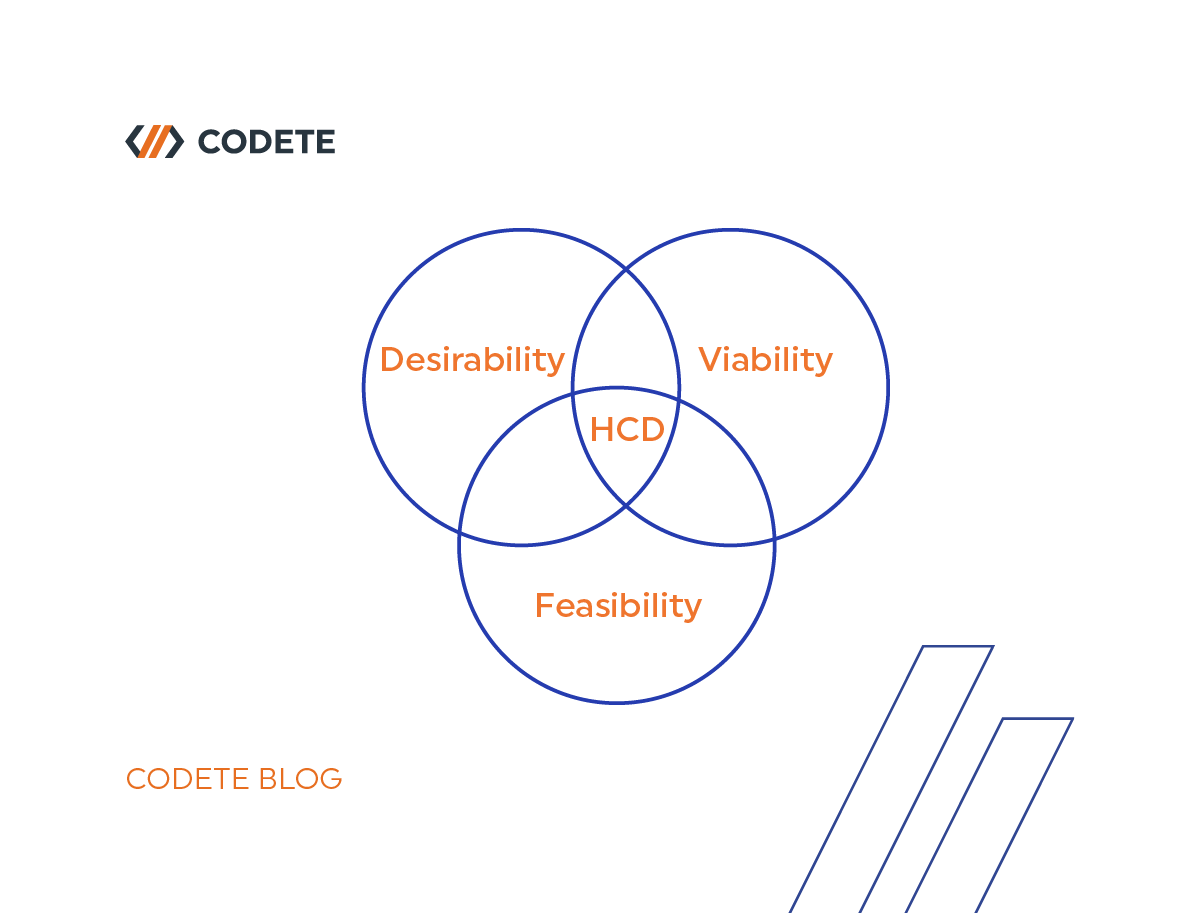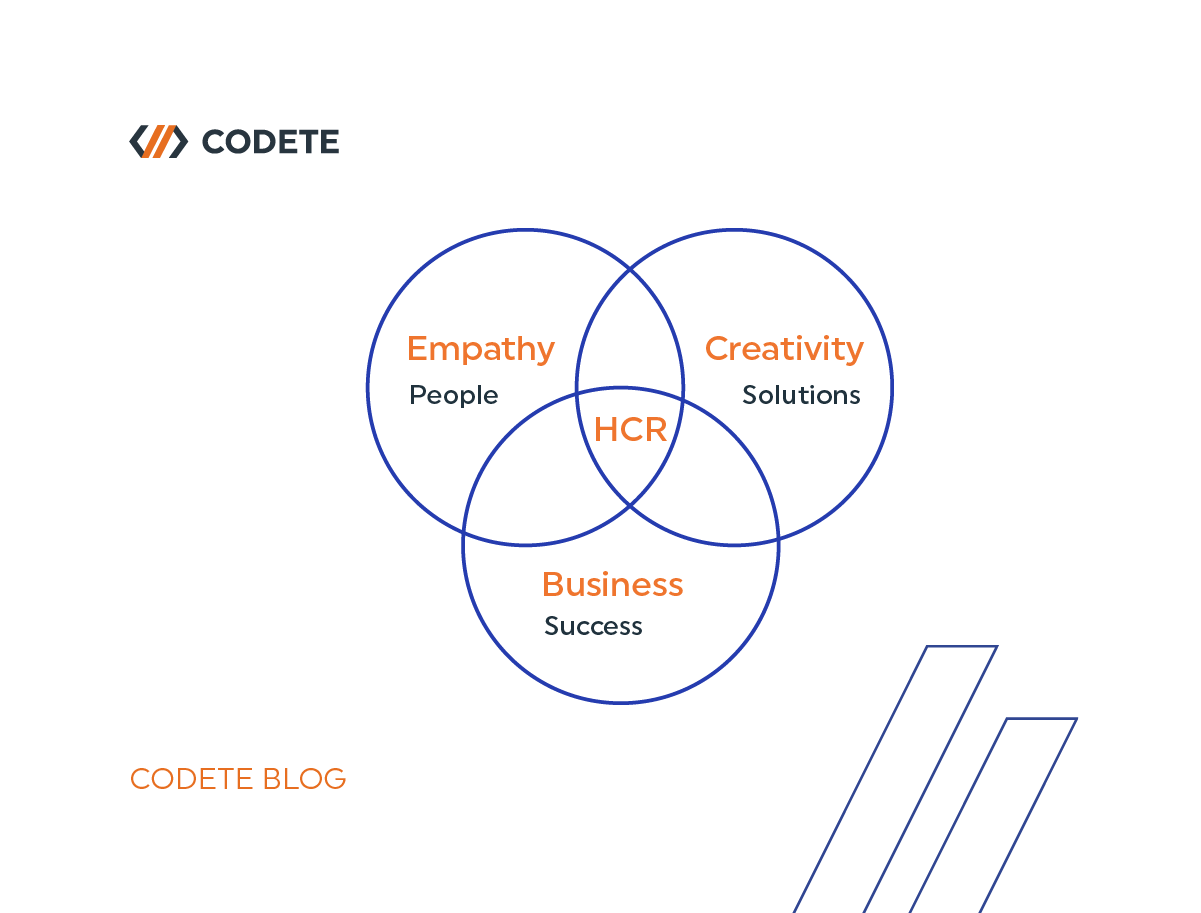Today's recruitment teams face a daunting mix of challenges, ranging from high turnover rates and economic uncertainty to ever-changing employee expectations. If your organization struggles to keep up with market demands, it's time to consider a new approach. That's where human-centered recruiting comes in.
By putting people at the center of the recruitment process, you can significantly improve your chances of attracting and retaining top talent. Let's take a look at how being human-centered can help your talent acquisition flow stay on top.
Table of Contents:
- Closing the Talent Gap: Recruiting Strategies for Success
- Direct Search: The Key to Successful IT Recruitment
- Becoming Human First: Prioritizing People in Talent Acquisition
- Conclusion
Closing the Talent Gap: Recruiting Strategies for Success
The IT industry's dynamic evolution has led to a widening labor and skill gap, making it challenging for businesses to build effective tech teams. Post-pandemic socioeconomic issues have only added to the market's complexity, causing wage pressure due to a talent shortage. As a result, talent acquisition is now a critical business capability for success, particularly when scaling up.
As Recruiting Departments are perceived to have increasingly strategic and consultative roles in the near future, this mindset is essential for IT companies to build and maintain robust and stormproof teams. Even the best-planned strategies and goals are bound to succeed with the right people.
As a result, IT firms must invest in developing a strong talent pipeline, which includes sourcing top candidates, marketing their brand, and providing a positive candidate experience. By adopting a strategic approach to recruitment, companies can attract and retain the best talent, enabling brands to scale up successfully and stay competitive in the IT industry.
Direct Search: The Key to Successful IT Recruitment
Over the years, recruitment has transformed from an old-fashioned administrative approach (filled with back-office tasks) to an active talent acquisition method. Direct search, in which recruiters approach passive candidates, is now critical to business success.
Initially used for recruiting C-level executives for large corporations, direct search has proven effective in attracting highly skilled and experienced employees. It’s especially useful in competitive and fast-growing environments where the candidate usually doesn’t have time to search for another opening or the expertise needed is too specific to be published online. The concept is based on a well-known truth that the best employee is surely not on the market but has already been hired. It does not mean, however, that he couldn’t be interested in any change.
This type of network-based search is an effective recruitment method that provides the company access to a pool of highly skilled and experienced employees. Every time a new opportunity arises, we already have a list of potential candidates open to new collaborations. So, instead of researching the market for the position, you can simply move on to analyzing profiles. It saves a tremendous amount of time.
Plus, when talking with the client about the project requirements, you can suggest several potential candidates from your database, quickening the kickoff time.
That's why talent acquisition is a top priority for most IT companies on the market. One (verified) recommendation is believed to save three months of searching on both ends. But to actually save any time, we should plan our efforts, as effective direct search requires more than just building and managing pipelines. As traditional recruiting methods become less effective, recruiters must understand the market needs, candidate requirements, and industry trends.
THE CODETE WAY
To attract top talent and keep up with the ever-evolving market, businesses must be flexible enough to meet the evolving needs of the industry's changing demands.
As a first step, break your Recruitment into two teams. Dedicated sourcing teams should focus on talent mapping and market research, diversifying their efforts to different channels to continuously provide high-quality talent acquisition. While finding top talents may seem easy, engaging them in the process has never been more challenging - requiring new competencies, tools, and determination. Because of this, modern recruiters require a higher degree of adaptability, creativity, and empathy.
People are what matters most in business, and successful organizations understand this well.
Becoming Human First: Prioritizing People in Talent Acquisition
Human-centered recruiting draws inspiration from human-centered design, which emphasizes the importance of designing any product or service with people and their needs in mind. By prioritizing people over process, this approach considers the thinking, emotions, and behaviors of stakeholders and end-users to create a more positive and engaging experience for everyone involved in the recruitment process.
THE CODETE WAY
To use it properly, our recruiters' primary responsibility is to study the job market and candidate preferences and then apply that knowledge to successfully hire and retain top talent. We emphasize the importance of keeping their hearts and minds open to new ideas, as well as encouraging compassion and inventiveness. There is always room for actively listening to candidates' concerns and responding in a way that makes everyone involved feel heard and understood.
Let’s look at how human-centered design differs from the traditional problem-solving approach:
Traditional problem-solving focuses on the business benefits of a solution/ proposal (viability) and then checks if it's financially and organizationally doable (feasibility). So, we start with our solution in mind and then - by creating concepts that are viable and feasible - match them with stakeholders.
Goals (Proposals)→ Concepts→ Fit concepts to stakeholders
We need an employee > We publish the offer > We pick the best applicants.
The human-centered design puts stakeholders' analysis first, exploring the problem before suggesting a solution. It starts with observing and exploring different perspectives (of all stakeholders) before defining the problem- this broad perspective is a starting point for convergent thinking leading to solutions.
Stakeholders needs→ Concepts→ Goals (Proposals)
Our client needs: Senior Java Developer strongly experienced in cloud environments to take on the challenge of cloud migration. The new hire must be able to take on leadership responsibilities with time. Builder/ Improver kind of a person to join a project which is in the rapid growth phase. > We organized the event showcasing the methodology > We invite potential matches from the pool to experience the project’s culture > We reach out to attendees and share the job opportunity.
Candidate needs→ Concepts→ Goals (Proposals)
The Senior Java Developer is willing to take another step in his career. Preferably with an opportunity to grow within a team to a Leader role. Experienced working with modern technologies in different work environments. Keen on DevOps topics. > We add them to the pool (engage) > We invite them to meetups with the client > We share the job opportunity > We collect the feedback and improve the process.
Aside from expanding the pool, we’ve got some additional value: ongoing feedback on how to better adjust to the candidate’s needs.
Delivering better human experiences - that enable business success - requires a big mindset change. Our goal should now be achieved through solutions developed using the HCD model - hitting the sweet spot, defined by the combination of:
- Their desirability (meeting stakeholders' needs/requirements)
- Their feasibility (tested and proven to be technically feasible)
- Their viability (financially and organizationally viable, meeting business requirements)
Looking at the recruitment process through the lens of HCD, we can update the previous model to values closer to our home. The sweet spot defines the success of hiring.
Hear My Needs: The Importance of a Human-Centered Recruitment Approach in IT Hiring
Quality hiring is essential to attract and retain top talent in the competitive IT industry. But what makes a good hiring process? It all starts with a deep analysis of the needs of all stakeholders, including candidates and customers, and aligning them with the organization's headcount and growth plans.
This requires a creative approach that considers the IT market's changing needs and candidates' evolving expectations. A strong advisory system is crucial for IT projects, considering the experience of all members involved in the recruitment process.
Recruitment forces must listen to and empathize with:
- Hiring Requirements - needs of the project stakeholders
- Talent Requirements - needs of the candidates
The market's needs change, as do the needs of candidates. Today's candidates are looking for more than just compensation and benefits. They look for employment opportunities that provide a promising future, a remarkable experience, and a purposeful goal that is consistent with their values. While pay is still important, candidates are more interested in how a potential employer will impact their lives. Engaging candidates requires comprehending these deeper needs beyond a job description and remuneration.
Because of this, recruiters play a critical role in the first contact phase, which calls for an openness to hear and an eagerness to empathize with candidates' needs. To make a compelling case for the candidate to continue in the process, they must also be able to demonstrate the company culture, values, challenging projects, and requirements.
As a result, the cognitive shift brought about by human-centered recruitment takes place at the offering level, suggesting to the candidate who has already been hired that the potential job change could result in an experience that truly adds value to their lives and creates exceptional growth opportunities. both privately and professionally.
Conclusion
Creative and empathetic recruitment strategies are critical in today's business world for building strong and quality teams, satisfying customers, and improving financial performance. At the heart of every process are people with needs that must be met - which should always be thought of in the same way that we think of meeting the needs of our clients.
There is no better recommendation for a workplace than its employees fully identifying with its culture and values - not only on paper but also proudly outside of work hours. That is why you should never forget that recruitment is more than just finding the right candidate for a job; it is also about creating a professional experience that adds value and assists candidates in achieving their goals. And to find the best fit for the candidate and the organization, recruitment advisors must always listen and empathize with hiring and talent requirements.
If you’re interested in similar topics, we invite you to join our recruitment-related Meetup panels and discover the importance of your company culture's critical role in talent sourcing and engaging candidate networks.


